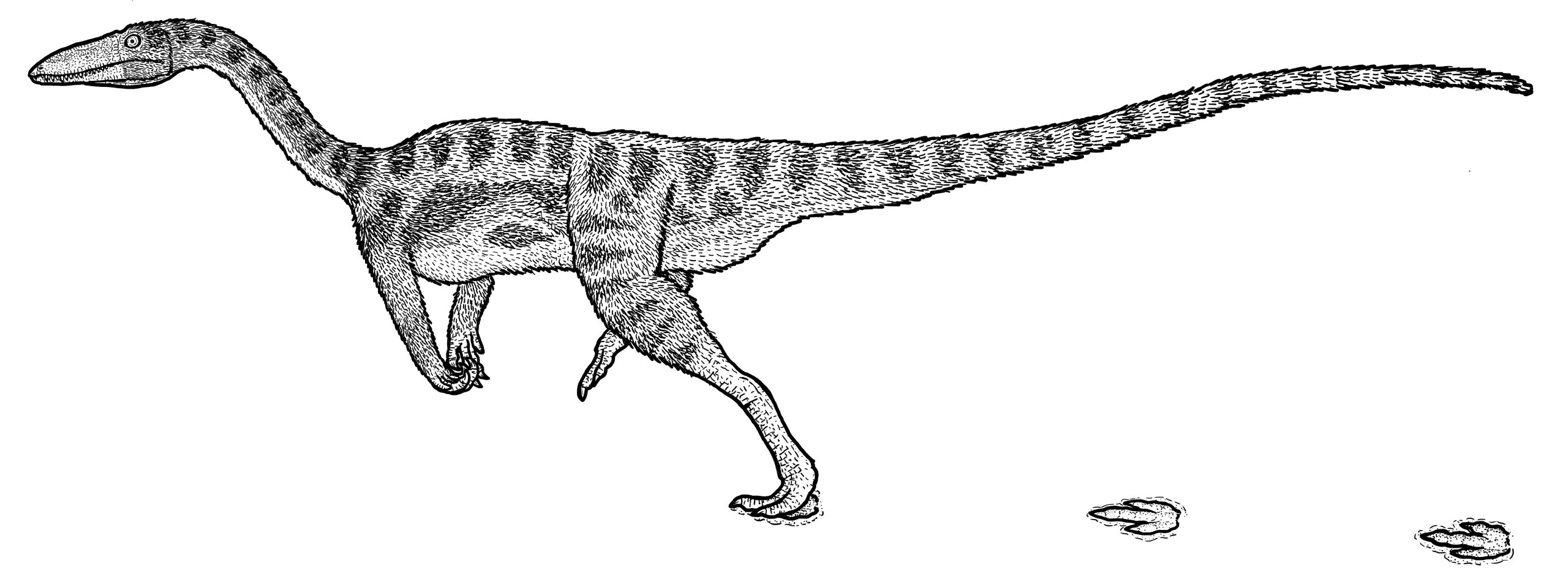Some information may be outdated.
A small fossil pelvis from the Moab area has been named the oldest identifiable dinosaur fossil bone ever found in Utah.
The collaborative efforts of three paleontologists – Xavier Jenkins with Arizona State University’s College of Liberal Arts and Sciences, John Foster with the Museum of Moab and Robert Gay with the Colorado Canyons Association – have resulted in an article published in the Utah Geological Association’s journal Geology of the Intermountain West that identifies this fossil from the Late Triassic Period (225–200 million years ago) as belonging to a small meat-eating dinosaur that roamed the area now known as Utah.
“The Triassic Period marks the beginning of the Age of Dinosaurs,” said Julia McHugh, Curator of Paleontology for the Museums of Western Colorado, where the fossil is curated. “This fossil helps give us a starting point for their evolution and diversity in the Triassic of Utah. This specimen is the oldest known dinosaur bone from Utah, and the first found from the Triassic Period. It helps to fill in some of the gap to show us that for sure some of the oldest dinosaurs were present in ancient Utah.”
The dinosaur fossil – a part of the pelvis consisting of fused vertebrae, called the sacrum – is from a small, flesh-eating dinosaur, similar to the dinosaur Coelophysis that is known from New Mexico and Arizona. While it was assumed that Utah had these large turkey-sized dinosaurs running around, solid evidence of their existence was not available until this specimen was found.
“There are plenty of footprints that suggest these predatory dinosaurs were around during this important time, but footprints can be affected by lots of factors, and many non-dinosaurian reptiles of the time had very similar feet,” Gay said. “The few bones that have been found previously in Utah and called ‘dinosaurs’ were really scrappy, and we can’t actually be sure that they really came from dinosaurs. The Triassic Period in Earth’s history is critical because it spans the rise of dinosaurs from these small creatures to those that dominate pretty much every land ecosystem five million years later.”
The fossil was found in the Chinle Formation on Bureau of Land Management (BLM) land north of Moab in 2005 by the Museum of Moab Director John Foster and a volunteer, when both were working with the Museum of Western Colorado. The collection of fossil vertebrates on BLM land requires a paleontological resources use permit, as was the case with this study.
“It was a blind-luck find in a way,” Foster said. “We knew the rock type to look at and we were specifically looking for reptiles in the Chinle, but most that are found in that unit are non-dinosaurs. I was looking for teeth and bones exposed and visible on loose blocks of rock, and my assistant, Ray Bley, decided to chisel open a similar rock but one that had no indication of bone on or in it. You could do that a thousand times and see only scrap, but Ray split a chunk off and said ‘What’s this?’ – I walked over and there they were, the fused vertebrae of a dinosaur.”
The comparison that Jenkins, Foster and Gay carried out showed that, given the ambiguity of the track evidence and the fragmentary nature or uncertain age of all other purported Triassic dinosaur specimens in Utah, the Moab specimen represents the oldest confirmed dinosaur fossil in the state.
“I think what this helps illustrate very well is that the rise of dinosaurs was rather gradual and that for some time after their first appearance, dinosaurs were in fact very rare,” Foster said. “Evidence of large reptiles is found all over the Moab area in the Chinle Formation, but it took until now to find one that is definitely a dinosaur. And this pattern of actual dinosaurs being rare is true in the Triassic in places like Arizona too.”
The paper in Geology of the Intermountain West is available at: utahgeology.org/openjournal/index.php/GIW/article/view/22.
Findings published in new journal article
Appreciate the coverage? Help keep local news alive.
Chip in to support the Moab Sun News.





